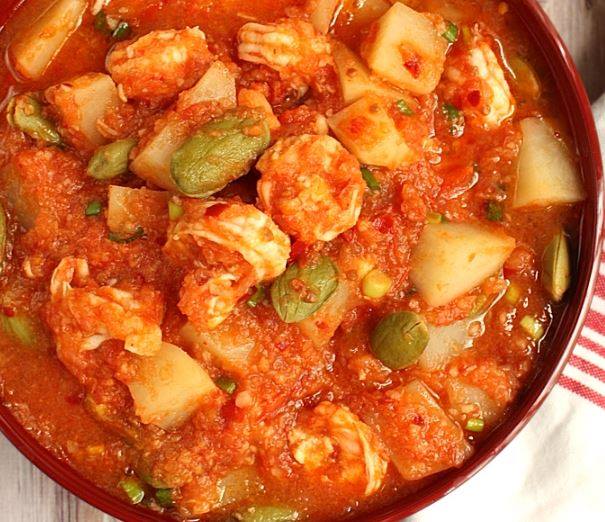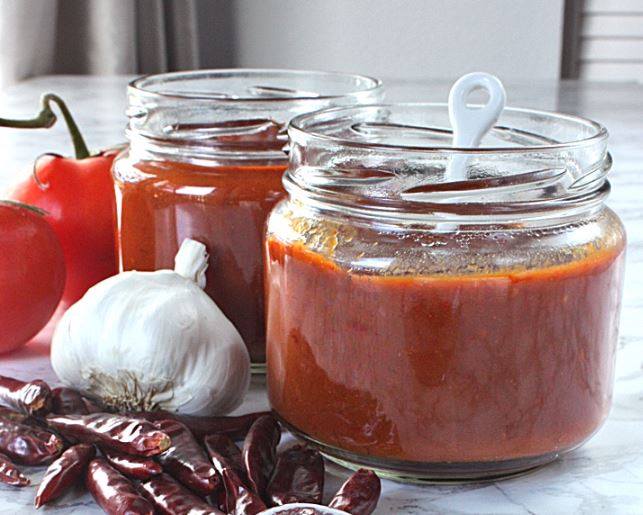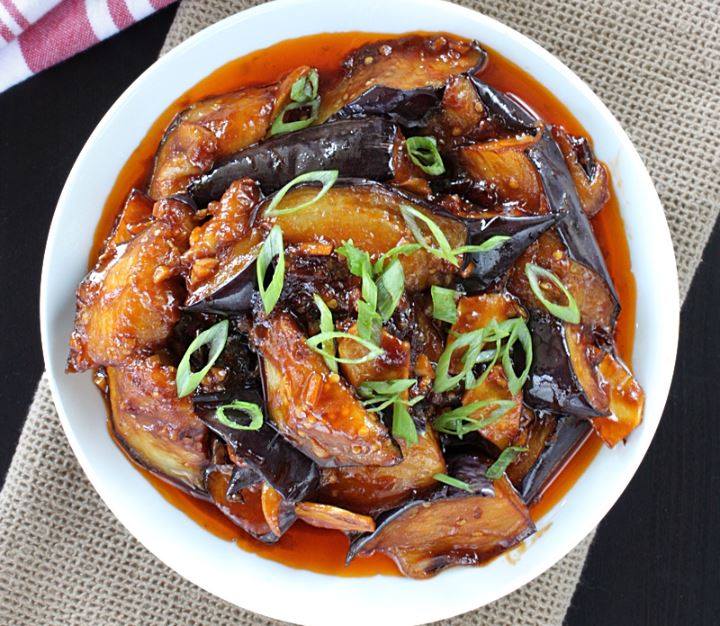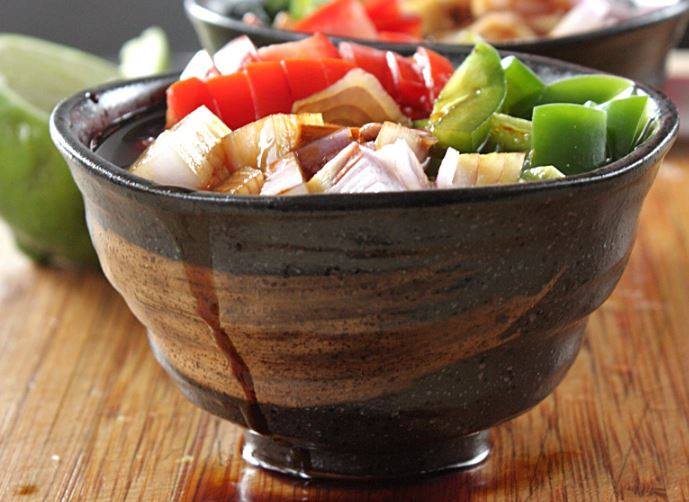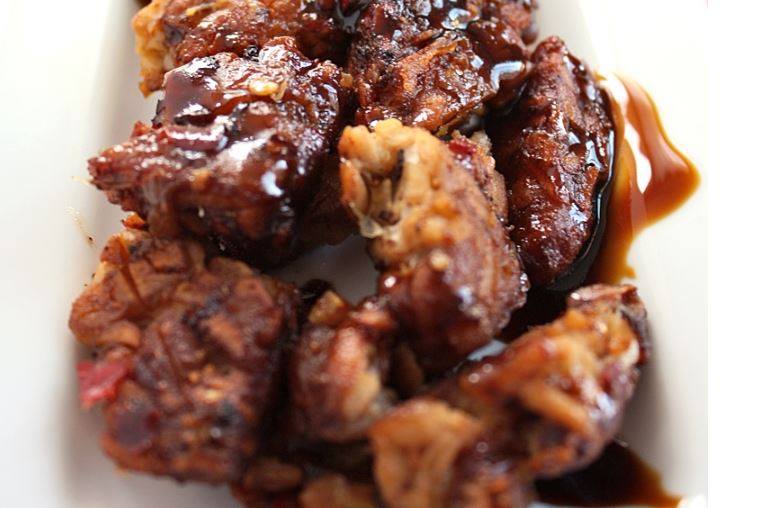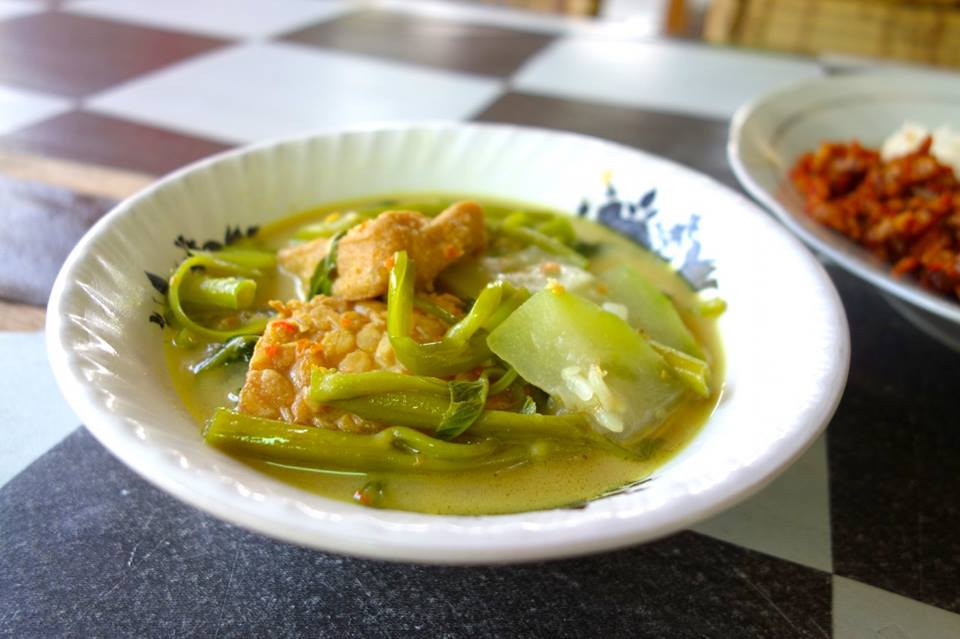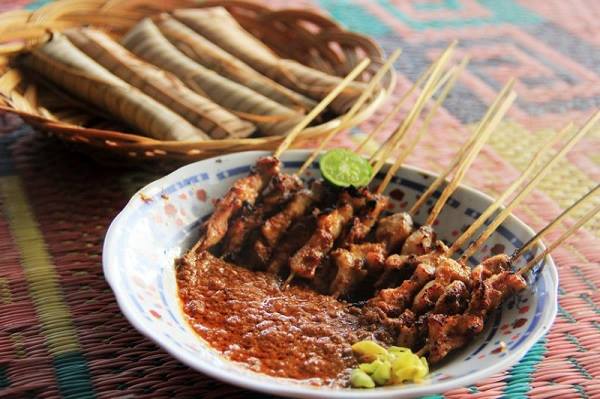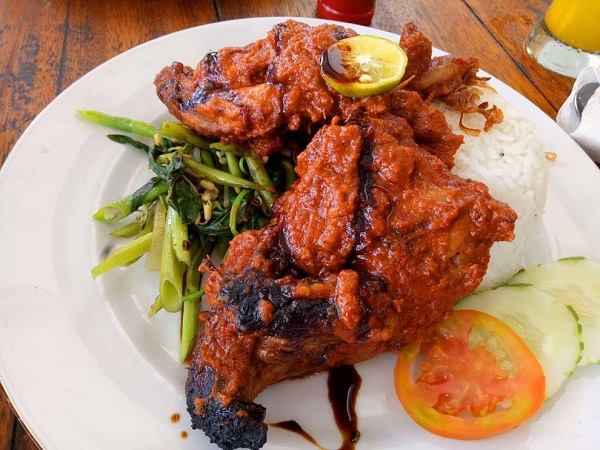
11 Apr Fiery Cuisines Part 24 – The Island of LOMBOK
Andrew’s Essential Fiery Food Facts that a Pyro- Gourmanic needs to know
Part 31
Fiery Cuisines Part 24… The Island of LOMBOK
My love of LOMBOK and it’s cuisine started over30 years ago, when I first visited there to get away from the tourist hell of Bali, I have been there now 3 times ,and can’t get enough of their food…… Their use of Tofu and Tempeh just blows my mind..enjoy
Lombok is an island in the West Nusa Tenggara province of Indonesia. It is part of the chain of the Lesser Sunda Islands, with the Lombok Strait separating it from Bali to the west and the Alas Strait between it and Sumbawa to the east.
Located just east of Bali, Lombok in many ways lives up to or exceeds the promotional term, “an unspoiled Bali”. With beautiful beaches, enchanting waterfalls, the large, looming volcano of Mount Rinjani combined with relatively few tourists, Lombok is indeed the paradisiacal tropical island that many people still mistakenly imagine Bali to be now.
The indigenous Sasak people of Lombok are descendents of a Malay race who have inhabited Lombok for at least 2,000 years. As part of the Indonesian archipelago, Java has influenced Lombok to varying degrees, conquering and incorporating the island into the Majapahit Empire in the 14th century. Today’s Sasak aristocracy still claims Javanese ancestry.
The Balinese colonized Lombok in the 18th century, ruling the island for 150 years until 1894. Balinese influence has always centered in the west, where Balinese still constitute at least 10% of the population. The last king of Lombok reigned over western Lombok during the mid-1800s and oversaw the construction of an impressive number of temples. He also restricted the land rights of the Sasak aristocracy, introduced an inflexible taxation system, and demanded forced labor of Sasak peasantry. The Sasak revolted several times in the 19th century, with Islam the unifying factor among the armies scattered and isolated across the island.
Sasak leaders approached the Dutch for help in overthrowing the Balinese in the early 1890s. The Dutch, mistakenly believing Lombok was rich in tin, obliged and the Sasak War broke out in 1894. The Balinese were soundly defeated and a number of temples and palaces were destroyed.
Over the centuries, Lombok has been populated by migrants from Java and other Indonesian islands, particularly Bugis shipbuilders and seafarers from Sulawesi. As part of the historical Spice Islands, Arab traders, Chinese, and Dutch all made their homes in Lombok and thus the island has become a melting pot of religions, cultures, beliefs, and ceremonies. The majority of the population today practices a moderate form of Islam, which is still changing and evolving with the impact of modernization and education. Most Sasak Muslims observe Islamic religious practices, such as prayer five times a day and fasting during the month of Ramadan. There are two main groups among the Sasak: Waktu Lima, meaning “five times” (the number of times worshipers pray per day), or Sunni Muslims, and Wetu Telu, “three times,” nominal Muslims who combine Islamic observances with a mosaic of Hinduism, animism, and ancestor worship. Other religions, particularly Hinduism and Buddhism, peacefully coexist alongside the Muslim population.
Lombok means “Chilli” in Sasak, so it’s no surprise that traditional Sasak food is often fiery hot. Lombok is a melting pot of cultures and this is reflected in the styles of food available, ranging from Dutch-influenced breads and martabak to authentic Chinese cuisine, spicy Padang food from Sumatra, and traditional Indonesian fare.
Sate pusut is a delicious local satay, with meats, spices, and Coconut pressed onto flat skewers and grilled. Satay tanjung is a tasty specialty from the Tanjung in north Lombok, but also found in the cities, featuring fresh fish and spices wrapped on skewers and grilled. Lemper are small parcels of sticky Rice filled with shredded Chicken or Beef and spices, wrapped in coconut leaves. Lontong are small conical shaped cakes of Rice that have been wrapped in leaves and steamed.
Lombok is famed for its specialty Chicken dish ayam taliwang (small, free-range village chicken), which actually originates from the neighbouring island of Sumbawa. A whole ayam kampung is grilled over Coconut husks and served with sambal. Pelecing ayam is grilled Chicken broken into pieces, added to the spicy and piquant sauce, and slowly simmered, turning the marinade into a delicious red coating.
Being a Muslim island, Pork is not readily available except in the tourist areas and at Chinese restaurants and Lamb is rare. Goat (kambing) however, is very popular. A whole young Goat cooked on a spit is the meat of choice for celebrations, parties, and festive occasions, especially the Islamic festivals of Idul Adha and Eid-ul-Fitri. Beef is also freely available on Lombok and a staple in Lombok diets (unlike their Hindu cousins in Bali). Beef rendang is simmered for hours in Coconut milk and spices.
Large tuna, Snapper, Spanish mackerel, barracuda, and a huge variety of shellfish are found in the seas off Lombok. Ikan (fish) are generally served whole and baked, fried, or more often, grilled on outdoor barbecues over a fire of charcoal and Coconut husks. Local cumi cumi (Squid) and udang (Prawns) are cooked in fiery sambal, braised in Oyster sauce, or deep fried.
Particularly popular in Lombok are pelecing kangkung and pecel, sold from kaki lima and warungs everywhere. Pelecing kangkung is locally grown kangkung (a type of leafy water Spinach) boiled and served with fresh Bean sprouts and topped with a fiery red Chilli and Tomato sauce. Pecel is a variant that combines kangkung, Cabbage, and other vegetables, fresh Bean sprouts, and sometimes Tomato with spicy Peanut sauce and Prawn crackers. Lalapan is a plate of fresh Cabbage, Snake Beans, and Cucumber served with spicy sambal. Beberuk (or Beberuq) is a typical Sasak side dish of finely diced Snake Beans and small, round Eggplant, with Tomato, Chilli, Shallots, Lime, and spices. Ares is a unique dish made from the inner stem of the Banana tree and mixed with Coconut milk and spices. Olah-olah is made from the heart of Banana tree flower mixed with Coconut cream, mild spices, and finely chopped Snake Beans. Rujak is unripe fruit such as Mango or Pawpaw, mixed with ripe Apple, Guava, or Pineapple, coated in a hot and sweet and sour sauce of sweet Soy, palm Sugar, and Chillies.
Despite being a Muslim island, alcohol is readily available in all the tourism areas.
